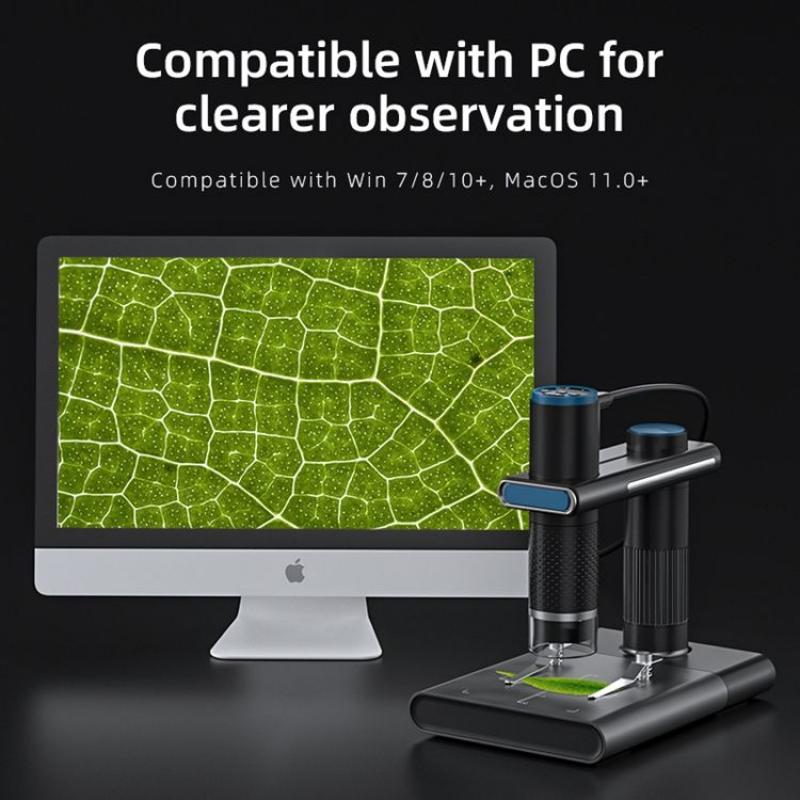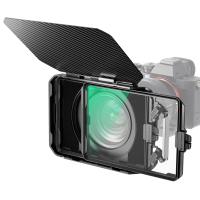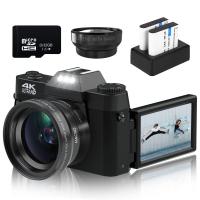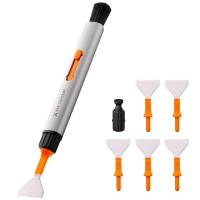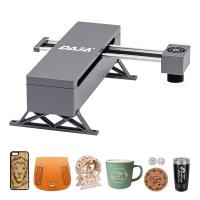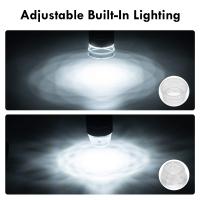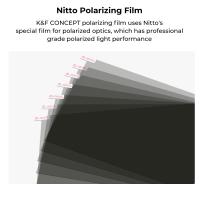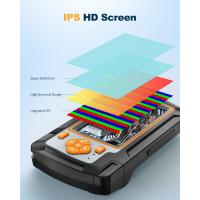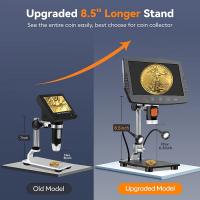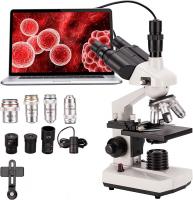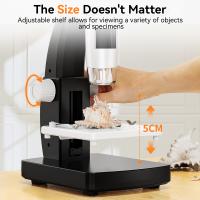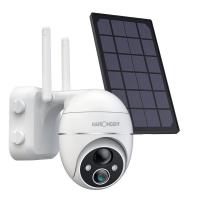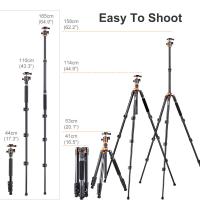Which Microscope Is Best ?
It depends on the specific application and the level of magnification required. There are several types of microscopes, including compound microscopes, stereo microscopes, electron microscopes, and confocal microscopes, each with its own advantages and limitations. Compound microscopes are commonly used in biology and medicine for observing cells and tissues, while stereo microscopes are useful for examining larger specimens in 3D. Electron microscopes offer much higher magnification and resolution than light microscopes, making them ideal for studying the ultrastructure of cells and tissues. Confocal microscopes use lasers to create high-resolution 3D images of fluorescently labeled specimens. Ultimately, the best microscope for a particular application will depend on factors such as the size and complexity of the specimen, the level of detail required, and the available budget.
1、 Compound Microscopes
Which microscope is best? The answer to this question depends on the intended use of the microscope. For general laboratory use, compound microscopes are the most commonly used and are considered the best option.
Compound microscopes use two or more lenses to magnify the specimen, allowing for high-resolution imaging of small structures. They are versatile and can be used for a wide range of applications, including biological research, medical diagnosis, and material science.
In recent years, advancements in technology have led to the development of digital compound microscopes, which offer additional features such as image capture and analysis. These microscopes are becoming increasingly popular in research and educational settings.
When choosing a compound microscope, it is important to consider factors such as magnification range, resolution, and ease of use. Additionally, the quality of the lenses and the overall construction of the microscope should be taken into account.
Overall, compound microscopes are the best option for general laboratory use due to their versatility and high-resolution imaging capabilities. With the latest advancements in technology, digital compound microscopes are becoming an increasingly popular choice for researchers and educators.

2、 Stereo Microscopes
Which microscope is best? When it comes to examining three-dimensional objects, Stereo Microscopes are the best option. They provide a magnified view of the object with depth perception, allowing for a better understanding of its structure and features. Stereo microscopes are commonly used in fields such as biology, geology, and electronics.
One of the latest advancements in stereo microscopes is the integration of digital technology. Digital stereo microscopes allow for the capture of high-resolution images and videos, which can be used for documentation and analysis. They also offer features such as measurement tools and image stitching, which can enhance the accuracy and efficiency of research.
Another important factor to consider when choosing a stereo microscope is the quality of the optics. High-quality optics can provide a clearer and more detailed image, allowing for better observation and analysis. Additionally, ergonomic design features such as adjustable eyepieces and armrests can improve user comfort and reduce fatigue during prolonged use.
Overall, when it comes to examining three-dimensional objects, Stereo Microscopes are the best option. With the integration of digital technology and high-quality optics, they offer a powerful tool for research and analysis.
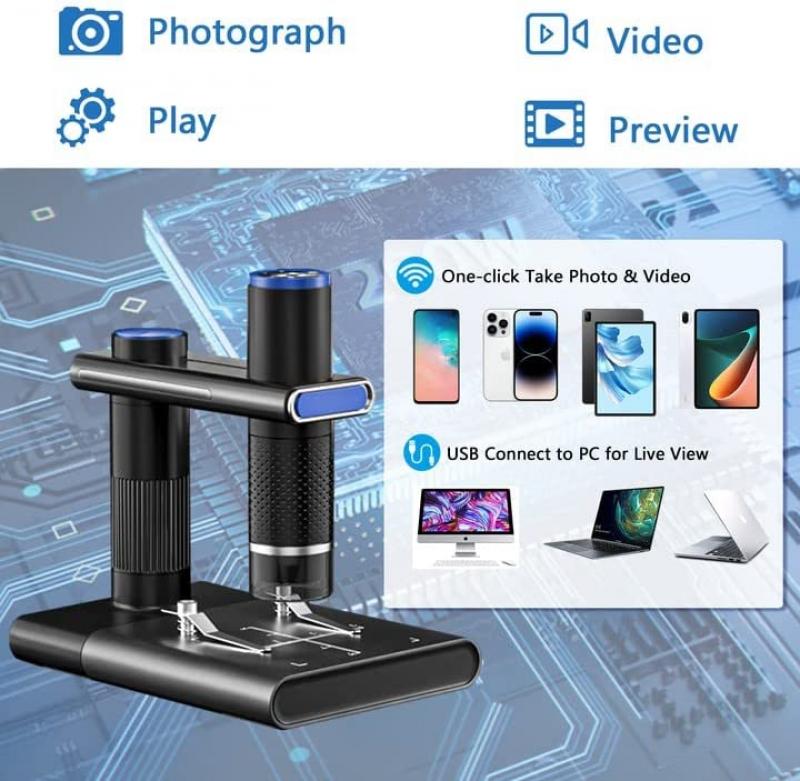
3、 Digital Microscopes
Which microscope is best? When it comes to digital microscopes, there are several options available in the market. However, the best microscope for you will depend on your specific needs and requirements.
Digital microscopes are becoming increasingly popular due to their ease of use, portability, and ability to capture high-quality images and videos. They are ideal for a wide range of applications, including education, research, and industrial inspection.
One of the latest advancements in digital microscopy is the use of artificial intelligence (AI) and machine learning algorithms. These technologies can help automate image analysis and improve the accuracy and speed of data interpretation.
Another important factor to consider when choosing a digital microscope is the resolution. Higher resolution microscopes can capture more detailed images, which can be important for certain applications such as medical research or quality control in manufacturing.
Other features to consider include magnification range, lighting options, and software capabilities. Some digital microscopes also offer 3D imaging capabilities, which can be useful for studying complex structures.
Overall, the best digital microscope for you will depend on your specific needs and budget. It is important to do your research and compare different models before making a purchase.

4、 Polarizing Microscopes
Which microscope is best? When it comes to studying minerals, rocks, and other geological specimens, polarizing microscopes are the best option. These microscopes use polarized light to examine the optical properties of materials, allowing for detailed analysis of their composition and structure.
Polarizing microscopes are particularly useful for studying thin sections of rocks and minerals, as well as for identifying and characterizing mineral inclusions in other materials. They can also be used to study the optical properties of synthetic materials, such as polymers and crystals.
One of the latest developments in polarizing microscopy is the use of digital imaging technology to capture and analyze images of specimens. This allows for more precise and accurate measurements of optical properties, as well as the ability to share and collaborate on data with other researchers.
Overall, polarizing microscopes are the best choice for geological and materials science research. They offer high levels of precision and accuracy, and are essential tools for understanding the composition and structure of a wide range of materials.
